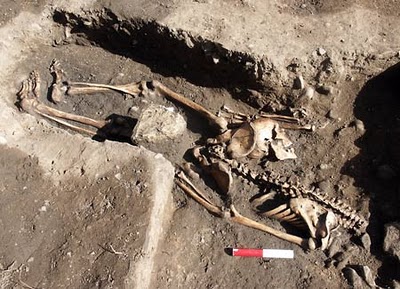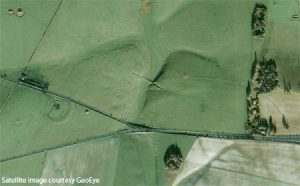 For decades scientists believed Neanderthals developed ‘modern’ tools and ornaments solely through contact with Homo sapiens, and it is often said that the cavemen weren’t able to adapt their hunting techniques to the changing climate quickly enough to prevent their extinction.
For decades scientists believed Neanderthals developed ‘modern’ tools and ornaments solely through contact with Homo sapiens, and it is often said that the cavemen weren’t able to adapt their hunting techniques to the changing climate quickly enough to prevent their extinction.
A new study nowsuggests these sturdy ancients were well capable of innovating without our help, adding to the growing pool of evidence that Neanderthal man was not a primitive, clumbering caveman.
Basically, I am rehabilitating neanderthals, explainsJulien Riel-Salvatore, assistant professor of anthropology at UC Denver. They were far more resourceful than we have given them credit for.
Uluzzian Innovation
About 42,000 years ago, the Aurignacian culture, attributed to modern Homo sapiens, appeared in northern Italy while central Italy continued to be occupied by Neanderthals of the Mousterian culture which had been around for at least 100,000 years. At this time a new culture arose in the south of Italy, one also thought to be created by Neanderthals. They were the Uluzzian and they were very different.
But when southern Italy too experienced a shift in climate, and the trees were replaced by grasslands, the regio’s inhabitants faced the stark choice of adapting or dying out.
The evidence suggests the Uluzzian began using darts or arrows to hunt smaller game to supplement the increasingly scarce larger mammals they traditionally hunted. Riel-Salvatore identified projectile points, ochre, bone tools, ornaments and possible evidence of fishing and small game hunting at Uluzzian archaeological sites throughout southern Italy.
These innovations are not traditionally associated with Neanderthals, suggesting they evolved independently, likely as a reaction to the dramatic changes in climate. But more importantly, they emerged in an area geographically separated from modern humans.
My conclusion is that if the Uluzzian is a Neanderthal culture it suggests that contacts with modern humans are not necessary to explain the origin of this new behaviour. This stands in contrast to the ideas of the past 50 years that Neanderthals had to be acculturated to humans to come up with this technology, he said. When we show Neanderthals could innovate on their own it casts them in a new light. It ‘humanizes’ them if you will.
The Neanderthal as Intelligent Being
We credit dolphins, monkeys and even pigs with ‘intelligence’, but common perceptionis only to oftenthatof the Neanderthals as thick-skulled, primitive ‘cavemen’. Yet, the Neanderthal weren’t ‘dumb’.
For starters, they had larger cranial capacities than our own species, andmammalian DNA retrieved from Neandertal stone tools suggests theysuccesfully huntend largegame.Neanderthals evenused a primitive form of make-up, although not if this was for ornamental or symbolic reasons (likely both).
Also,a study comparing the amount of cutting-edge, production efficiency and life time of Neanderthal tools (flint flakes) with the narrow flint blades used by more modern human argued that there was no technical advantage to the blades. Upper Paleolithic technology was not necessarily better, just different. (If you think ofotherexamples, !)
Where did the Neanderthals go?
The powerfully built (and steroid-fuelled, if you like) Neanderthals were first discovered in Germanys Neander Valley in 1856. The oldest remains with Neanderthal characteristics date to about 130,000 years ago. These Neanderthals disappear from the fossil record in Asia about 50,000 years ago and in Europe about 20,000 years later. Why the Neanderthal vanished remains unclear.
The ‘interbreeding hypothesis’ suggests that they were a subspecies that bred with Homo sapiens, disappearing through absorbtion. An alternative scenario is that Neanderthals were a separate species and got replaced by the Homo sapiens overrun by more advanced modern humans arriving in Europe from Africa.
Riel-Salvatore rejects that the Neanderthals were exterminated by modern humans. Homo sapiens might simply have existed in larger groups and had slightly higher birthrates, he said.
A recent study shows the Neanderthals share between 1 and 4 percent of their genetic material to the people of Asia and Europe. It has been suggested it is due to interbreeding between Neanderthals and the ancestors of non-Africans after they left Africa. But even if we did to some extent sleep with the ‘primitive caveman’, the populations that remained100% Neanderthal were probably out-competed and marginalized to extinction.
Riel-Salvatore’s research, to be published in Decembers Journal of Archaeological Method and Theory, isbased on seven years of studying Neanderthal sites throughout Italy, with special focus on the vanished Uluzzian culture.



